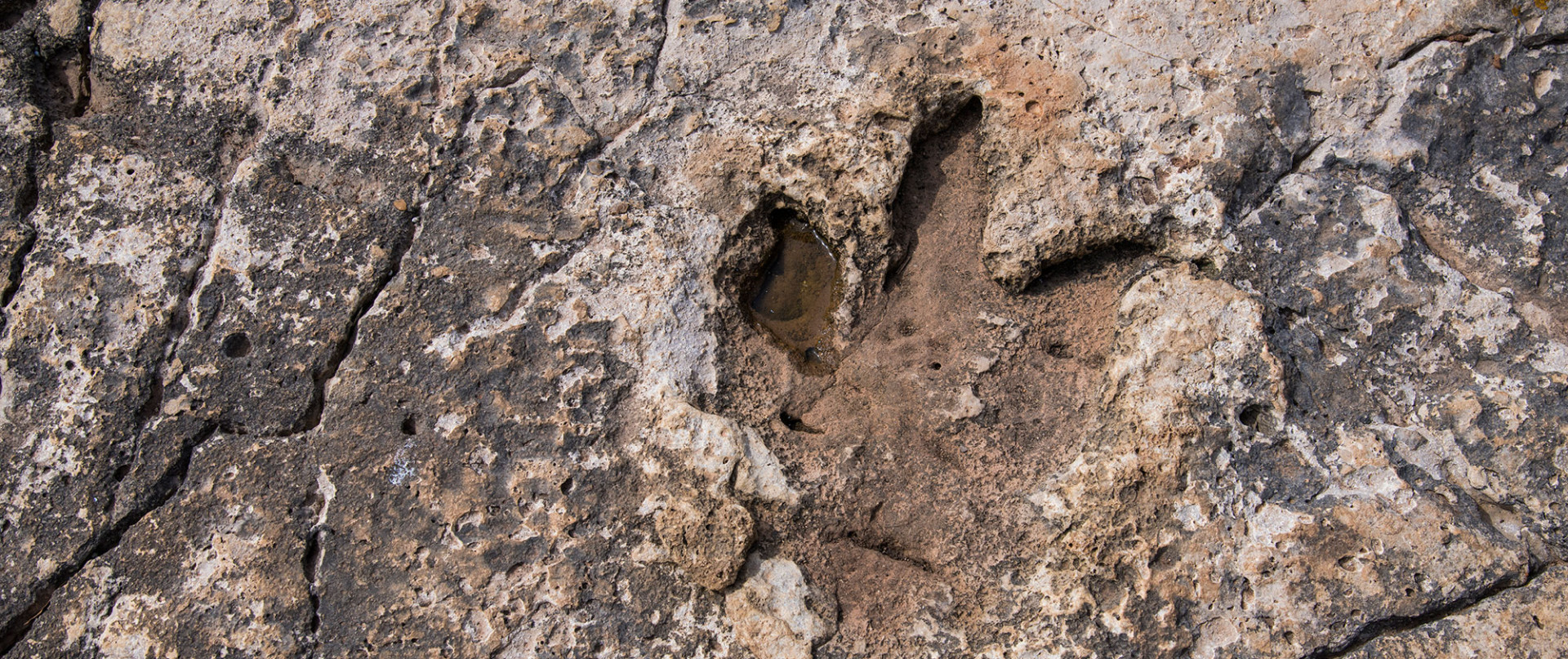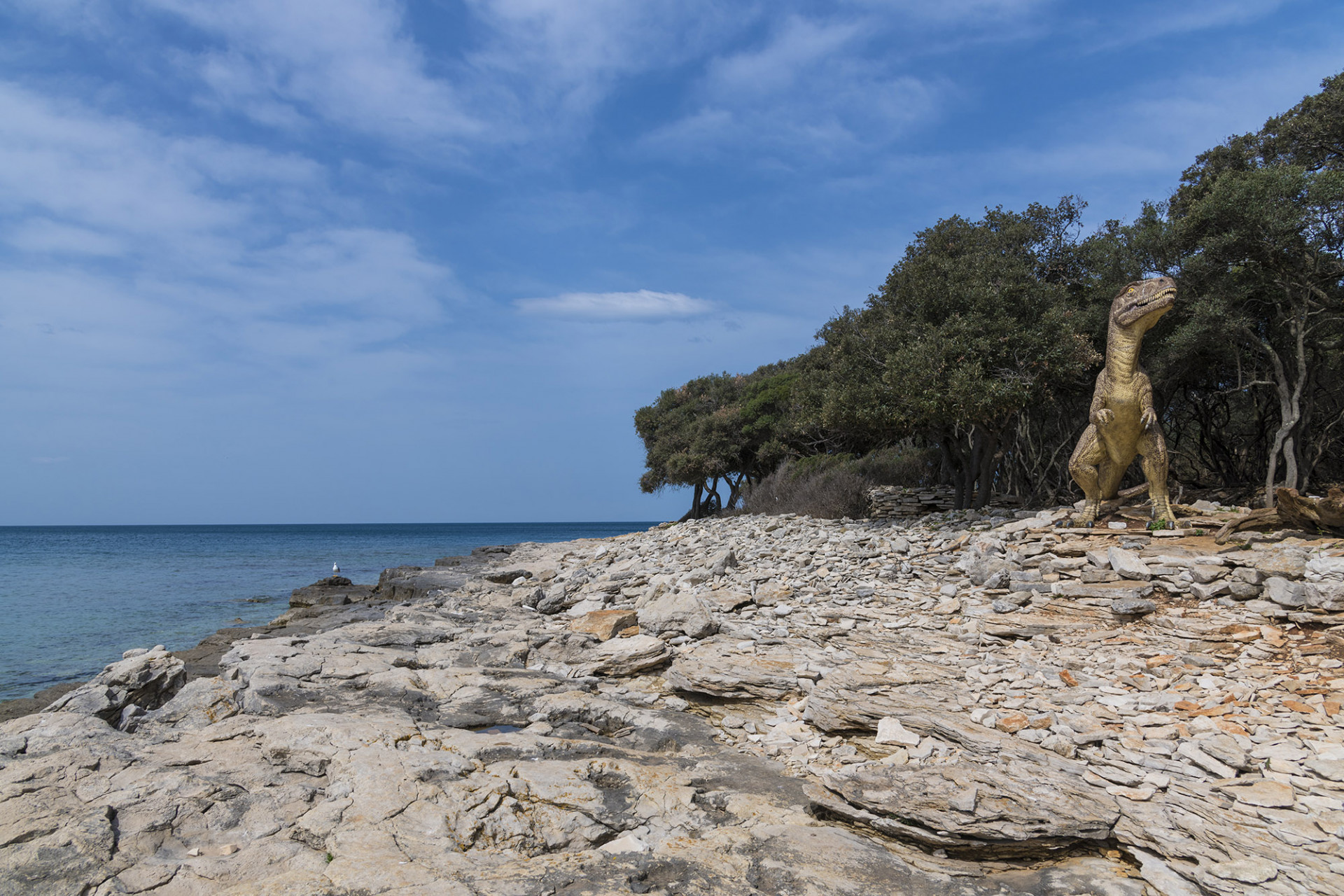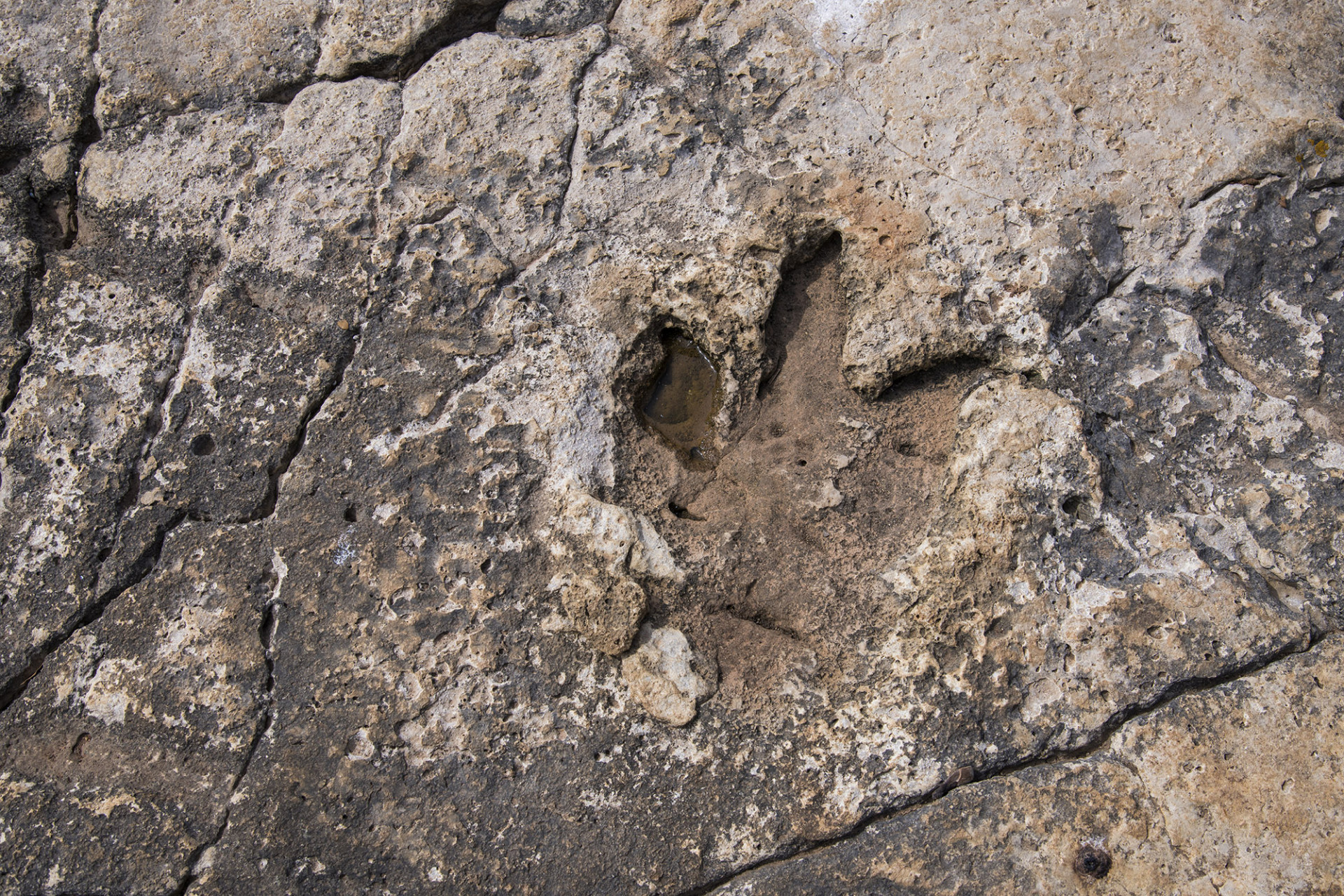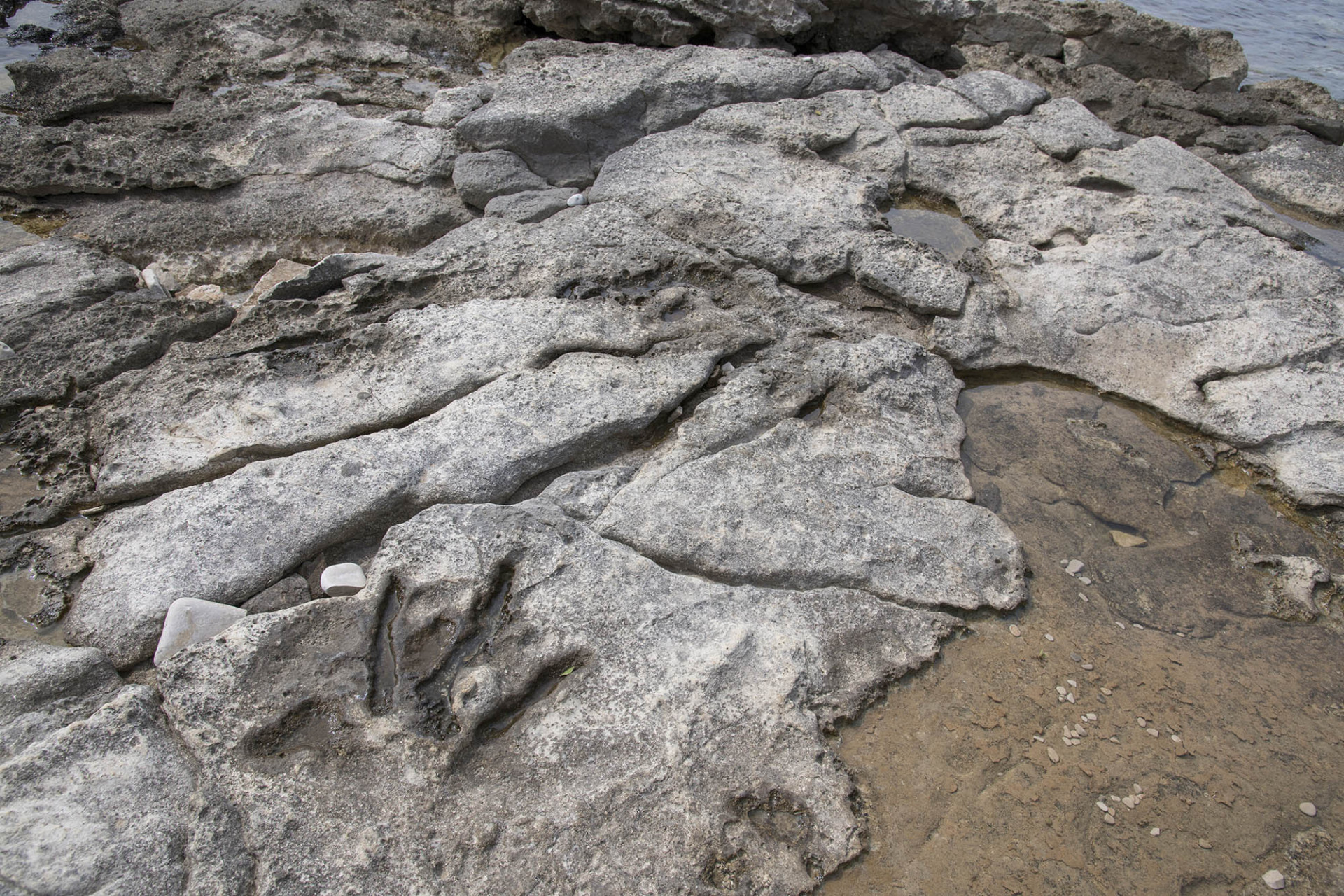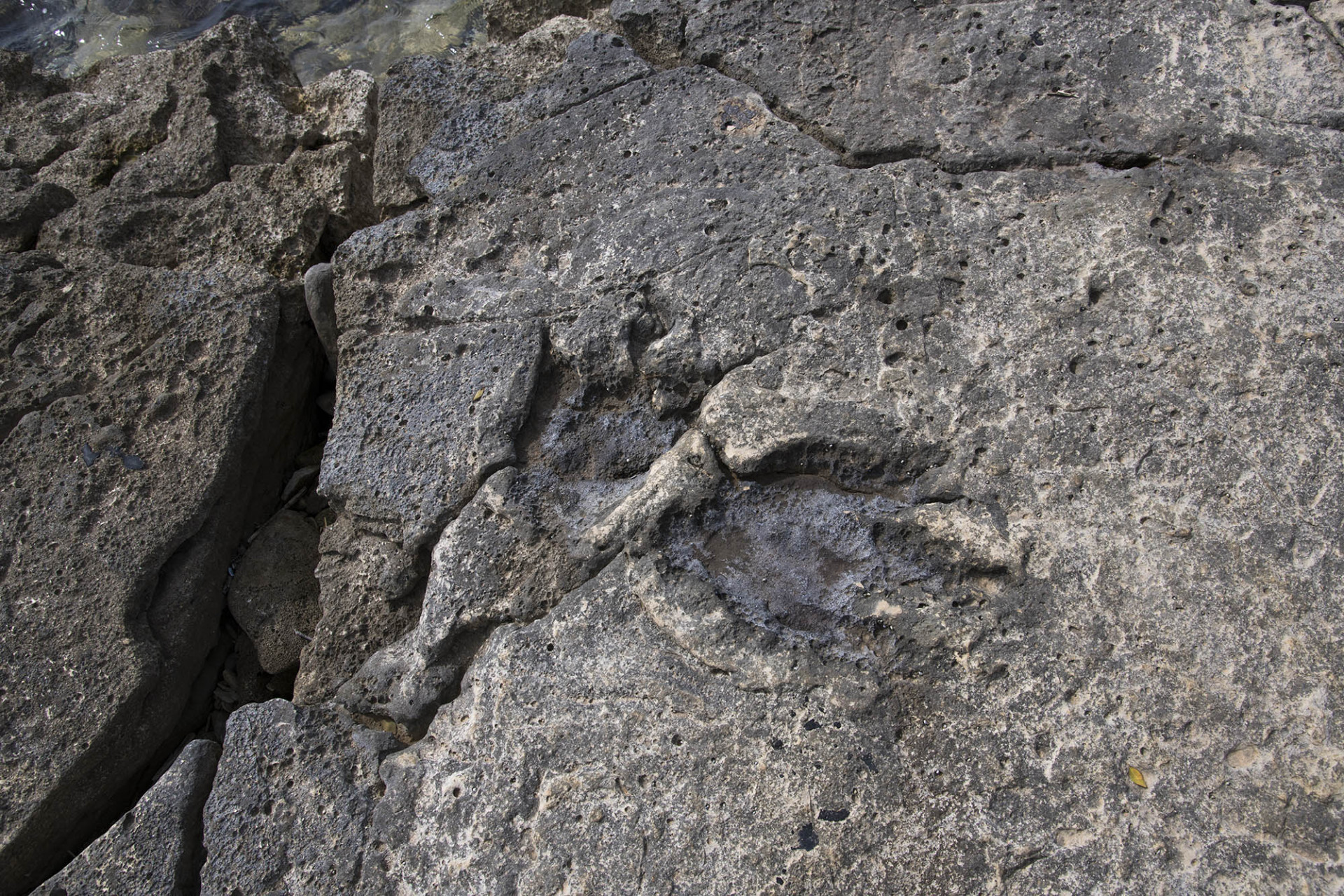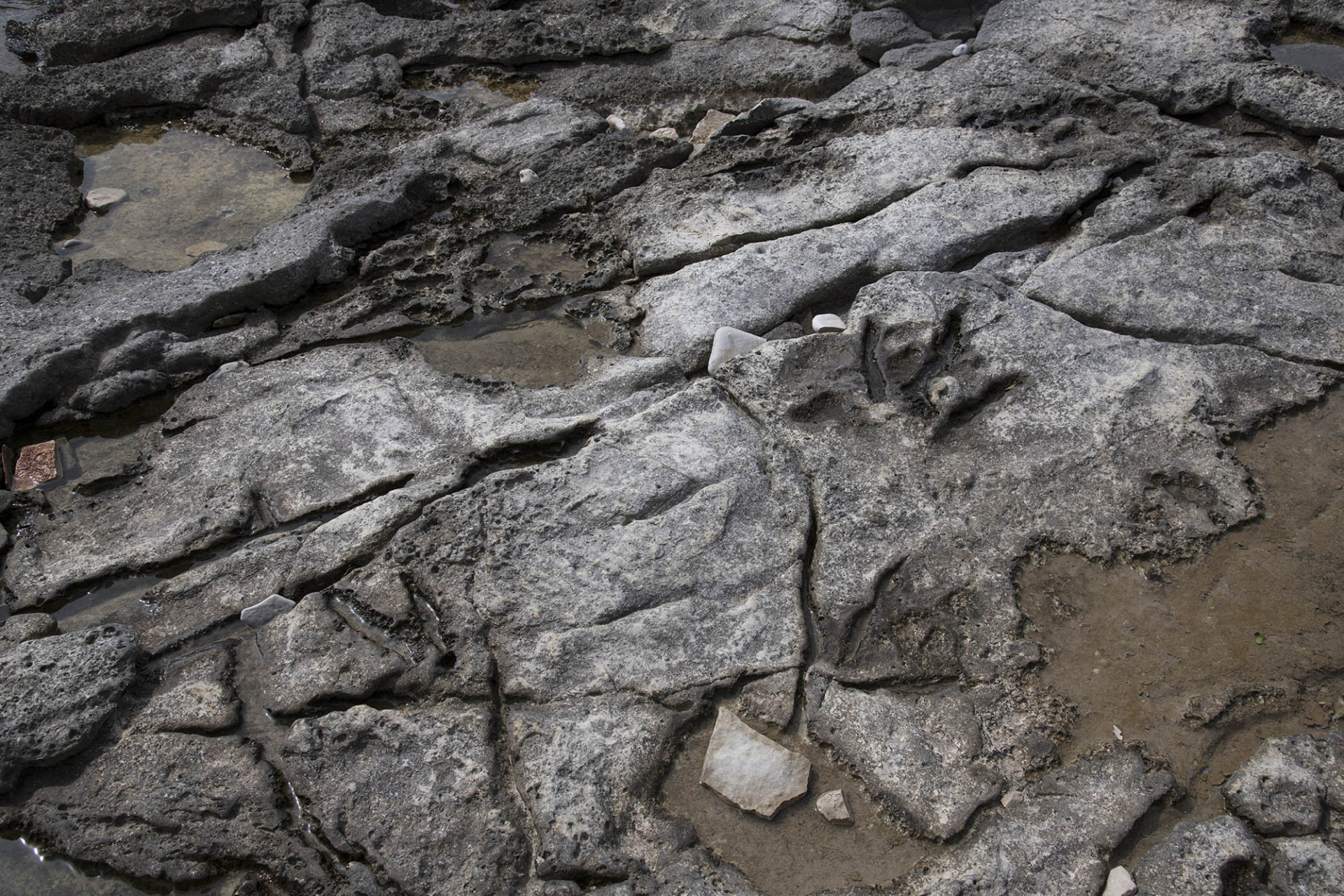Dinosaur footprints could only be preserved if dinosaurs were moving over soft substrates and thus left traces. The prints should then have been quickly covered with sediment (different from the substrate) and remained intact until the diagenetic processes lithified the sediment and turned it into a consolidated rock.
Extremely precious findings
We all know that walking on sandy beaches leaves traces which waves, tides, and rain destroy very quickly, so we can conclude that the likelihood of preserving traces is not high. Therefore, dinosaur footprints are rare and extremely valuable since they represent autochthonous findings.
When sailing into the port of Veliki Brijun and leaving the boat, it is possible to see the three-toed print in the limestone block, probably left by large theropod carnivore.
Geopaleontological sites
Until now, dinosaur tracks have been discovered at four sites of the National Park: Veliki Brijun and the islands of Vanga, Galija and Vrsar. For visitors there are available footprints on the island of Veliki Brijun, as well as on Cape Ploče and Cape Vrbanj.
In order to illustrate the size of these Mesozoic creatures that left their traces here for our visitors, a dinosaur reconstruction has been put up on Cape Vrbanj - a scientific and artistic sculpture of a theropod, a predatory carnivore, that is the result of collaboration of numerous experts from various fields.
 Parks of Croatia
Parks of Croatia
 EU projects
EU projects English
English
